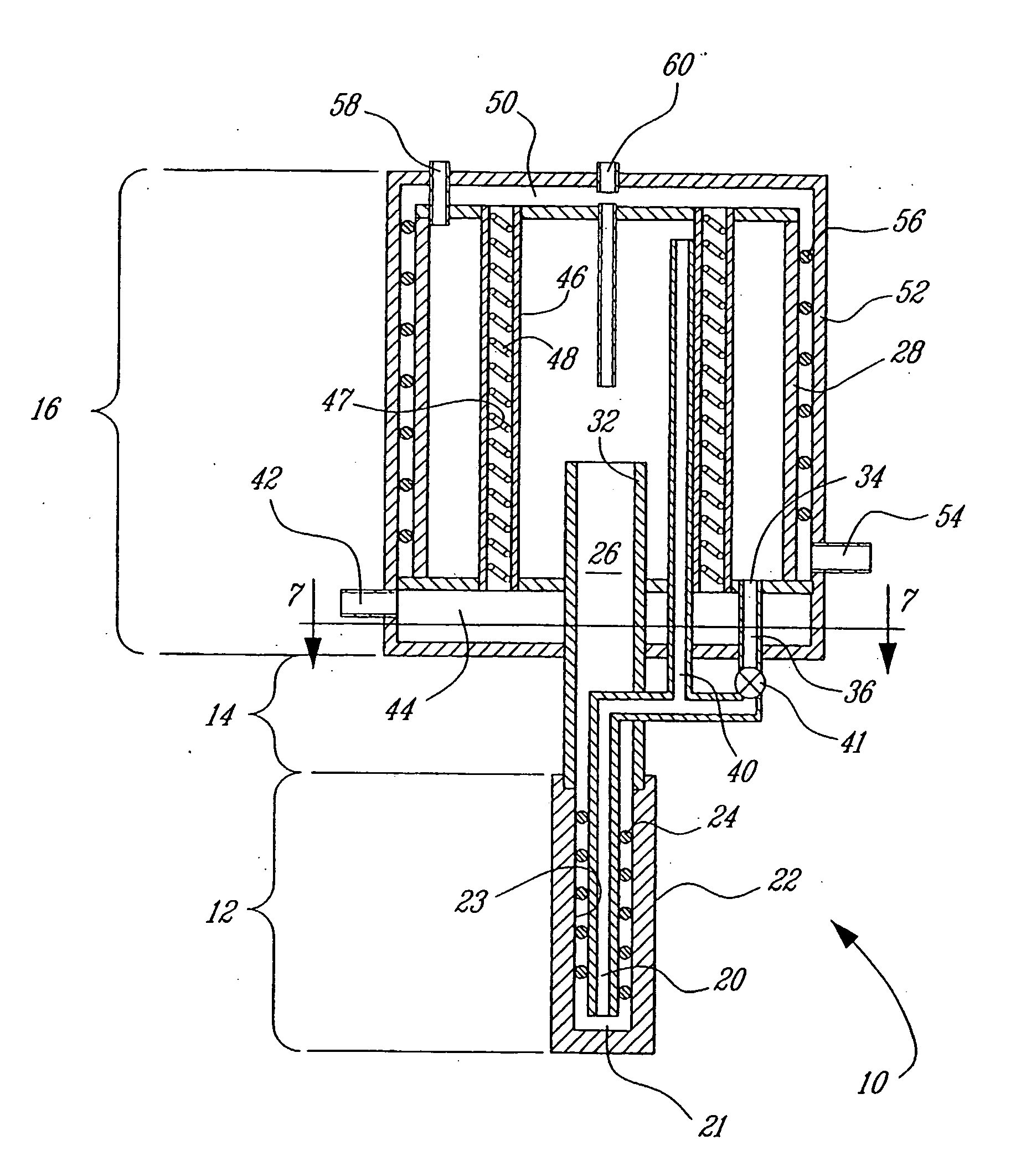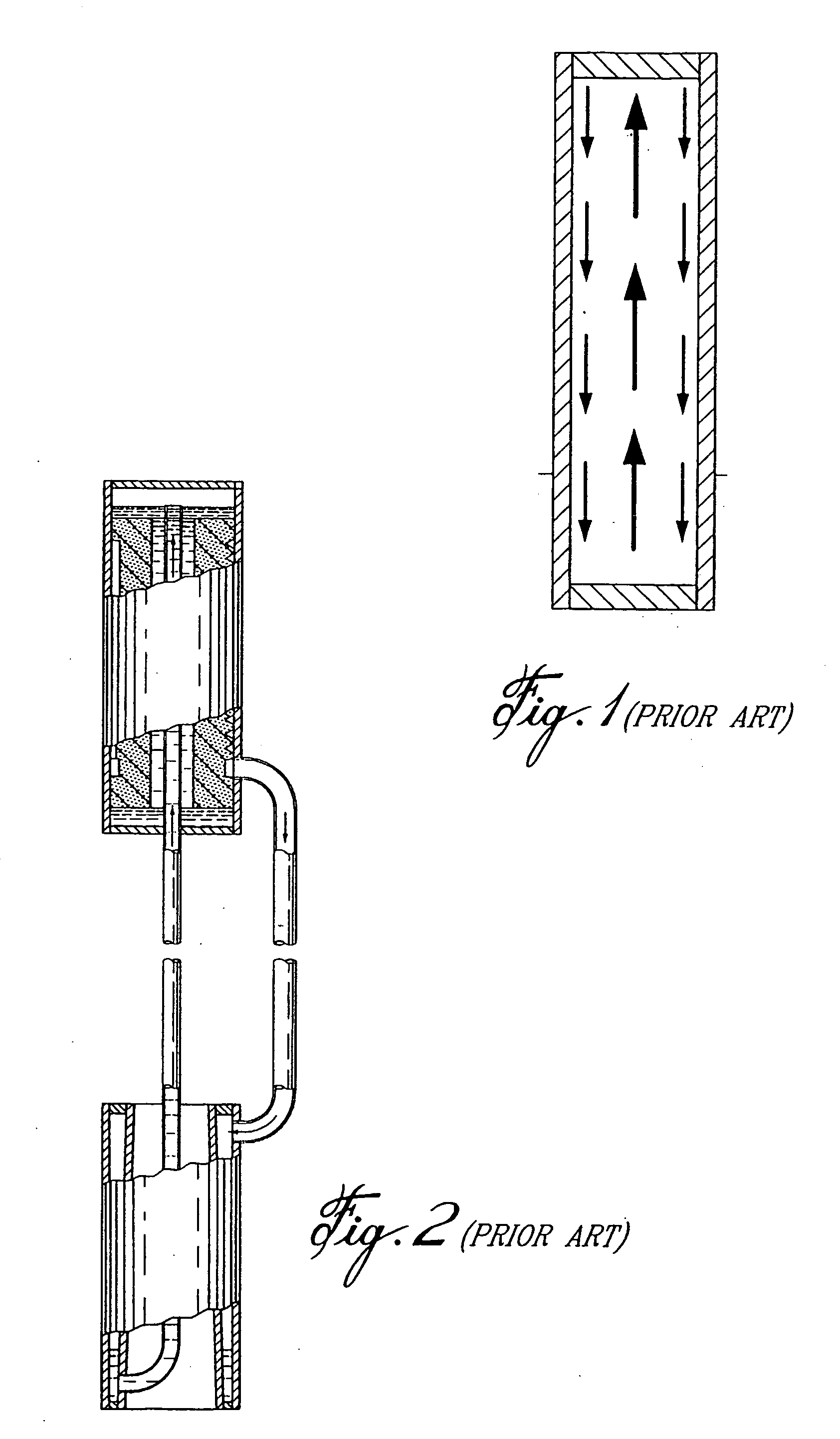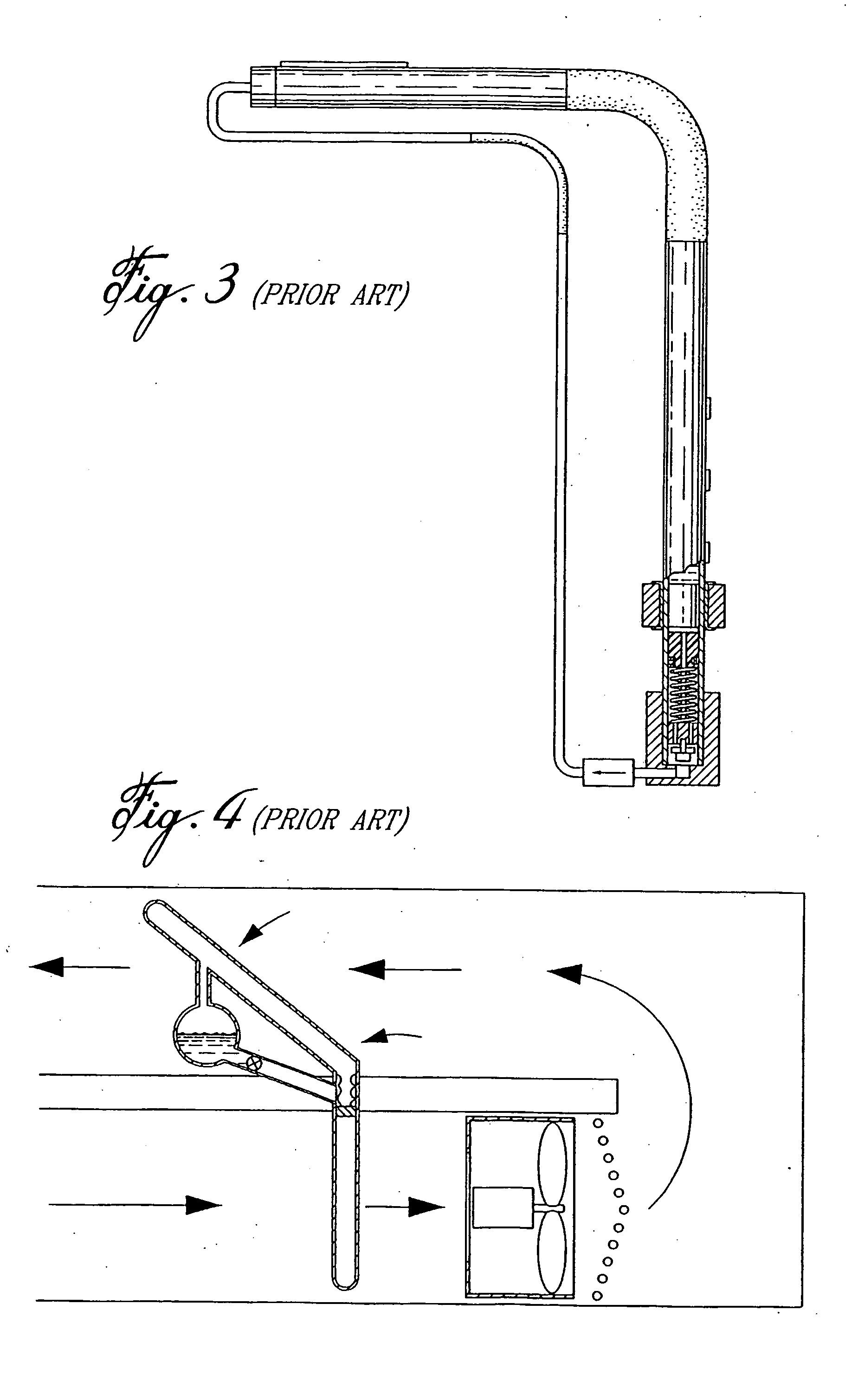Heat pipe
- Summary
- Abstract
- Description
- Claims
- Application Information
AI Technical Summary
Benefits of technology
Problems solved by technology
Method used
Image
Examples
Embodiment Construction
[0035] The heat pipe of the present invention is comprised principally of an evaporator, a coupling element, and a condenser, and comprises generally two principle embodiments, whose main classes of applications are as an energy extractor as shown in FIG. 5, and as a injection unit as shown in FIG. 6. In the latter, the heat pipe has one or more conduits that run through the unit to carry reagents. Examples of the use of such a heat pipe would be injection lances, tuyeres and burners. In the former class of applications, the heat pipe has no reagent-carrying conduit in the heat pipe, and is used for transferring energy, for example as a heat extraction device. The two embodiments are thus differentiated by whether or not a reagent is transported through the heat pipe unit.
[0036] Referring to FIG. 5 showing the first embodiment of the invention, the energy extraction heat pipe unit 10 comprises generally an evaporator 12, a coupling element 14, and a condenser 16.
[0037] The evapora...
PUM
| Property | Measurement | Unit |
|---|---|---|
| Temperature | aaaaa | aaaaa |
| Flow rate | aaaaa | aaaaa |
| Flexibility | aaaaa | aaaaa |
Abstract
Description
Claims
Application Information
 Login to View More
Login to View More - R&D
- Intellectual Property
- Life Sciences
- Materials
- Tech Scout
- Unparalleled Data Quality
- Higher Quality Content
- 60% Fewer Hallucinations
Browse by: Latest US Patents, China's latest patents, Technical Efficacy Thesaurus, Application Domain, Technology Topic, Popular Technical Reports.
© 2025 PatSnap. All rights reserved.Legal|Privacy policy|Modern Slavery Act Transparency Statement|Sitemap|About US| Contact US: help@patsnap.com



